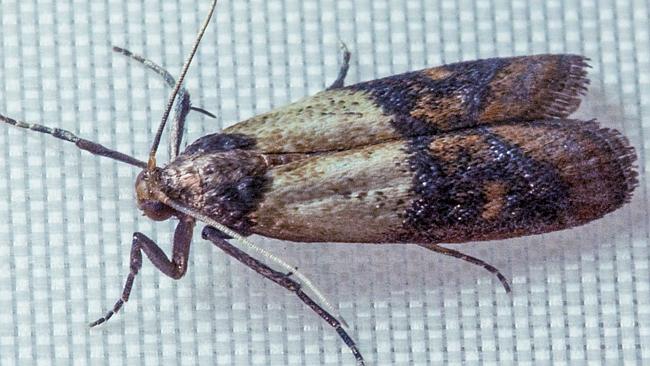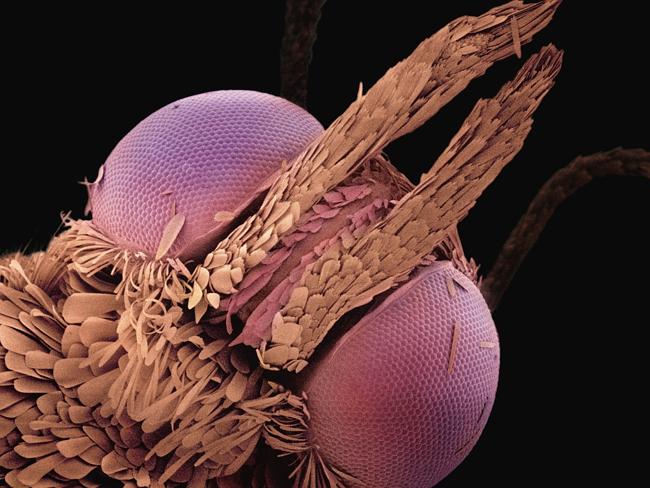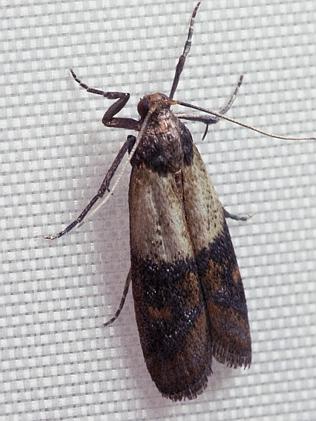The moth-er of all infestations: the plodia interpunctella - better known as the Indian Meal Moth - is all around you
IT’S a battle for your biscuits — and your flour, pasta and breakfast cereal — and the enemy is lurking in your pantry right now.

IT’S a battle for your biscuits — and your flour, pasta and breakfast cereal — and the enemy lurking in your pantry is ready to put up a fight.
A warm start to autumn has created ideal conditions for pantry moths to breed.
The tiny insects are capable of destroying an entire cupboard full of dry food in a matter of weeks.

Now for the bad news: If you haven’t noticed them, you’ve probably eaten them, or at least their crawling caterpillar offspring.
“They’re serious pests in flour mills and bakeries, so it’s almost guaranteed you’ve eaten bits of them from time to time,” Australian Museum entomologist Dave Britton said. And the good news: “They won’t hurt you.”
Mr Britton said the creatures arrived in domestic pantries as eggs already laid in packets of dry food, hatching when conditions were right into small caterpillars often mistaken for weevils. “Most people don’t use those dry products very often, so they’ll sit there undisturbed in the dark for a couple of months,” he said. “You’ll go to open the packet and that’s when you find you have trouble.”
The caterpillars feed on dry produce like flour and uncooked pasta and have an uncanny ability to wriggle into almost any container, even when they are screwed or clipped shut.

The larvae munch through food, spin a cocoon and eventually emerge as a pantry moth, ready to wreak another cycle of havoc.
“The latter-stage caterpillars have mandibles tough enough to bite through plastic packets, so they can be a problem,” Mr Britton said.
“This long spell of mild temperatures is going to promote growth in the moths so they can develop pretty quickly; we're talking 30-40 days from egg to adult if they have quality food.”
Waging war on the moths is no easy task. By the time most people notice the moths, an infestation is already under way — meaning any dry produce is likely to be contaminated.
Even when all food is replaced, a new clutch of larvae can spring from cocoons spun in crevices behind shelves and inside the dozens of peg-holes that modern pantries contain to adjust shelving height.
Commercial traps are now available, using pheromones to attract moths to a sticky demise, but they only work for males and that leaves females free to lay more eggs.
Mr Britton said the only solution was a combined attack: Dump all dry foods, clean the pantry, store foods in airtight containers and place new dry food in the freezer for a week to kill off the eggs.

But the good news is the tiny moths don’t feast on clothing.
WHAT IS IT?
* Pantry moth Plodia interpunctella
* Adult moths 8-10mm in length with 16-20mm wingspan
* Larvae (caterpillars) up to 12mm, white with brown heads
* Moths lay 60-400 eggs on food
* Eggs hatch in 2-14 days and live 2-41 weeks before cocooning, depending on temperature
* Larvae feed on bread, cereal, pasta, rice, flour, chocolate and other dry food
SIGNS OF INFESTATION:
* Small moths flying in pantry, reluctant to leave area
* White caterpillars and cocoons among dry foodstuffs
* Web-like caterpillar silk dangling inside food packets and containers, often with small pieces of food
* Silk cocoons in crevices and holes inside pantry
HOW TO GET RID OF THEM
1. Empty pantry completely
2. Dispose of all contaminated items outdoors
3. Throw away suspect items or place in freezer for one week to kill eggs
4. Vacuum pantry with nozzle attachment to reach cracks and crevices
5. Scrub surfaces with hot, soapy water
6. Wash all food containers in hot, soapy water
7. Spray and wipe surfaces with a mixture of white vinegar and tea-tree oil
8. Place bay leaves throughout pantry to ward off further infestations
9. Tape bay leaves to underside of container lids for added protection
10. Place replacement dry food packets in freezer for one week to kill eggs



